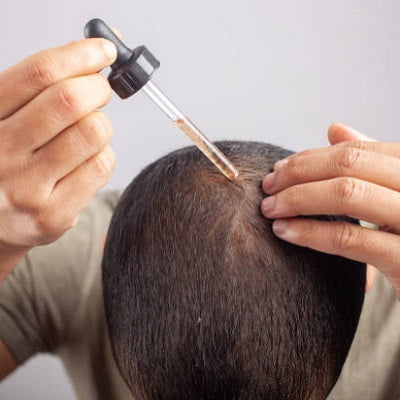
When a woman experiences baldness, it is considered female pattern baldness. It is necessary to understand the Top 3 Dos and Don’ts for Female Pattern Baldness before getting treatment.
In this blog post, you will learn about the basics and a few important dos and don’ts for female pattern baldness. So, read the following details carefully.
What Is Female Pattern Baldness?
Female pattern baldness, also known as androgenetic alopecia, is a type of hair loss that affects women. It is a genetic condition caused by a combination of genetic and hormonal factors.
It is characterised by a gradual thinning of hair on the crown of the head and a widening of the part. Unlike male pattern baldness, which typically begins at the hairline and results in a receding hairline and bald patch at the crown, female pattern baldness tends to cause diffuse hair loss over the entire scalp.
Moreover, it is most commonly seen in women over the age of 50, but it can affect women of any age. Women with a family history of hair loss, as well as those who have experienced hormonal changes. Such as pregnancy, menopause, or the use of birth control pills, are at an increased risk of developing female pattern baldness.
How To Treat It?
There are several treatments available for female pattern baldness (FPB), and the most effective treatment will depend on the individual’s specific situation. Here are some treatment options for FPB:
- Topical minoxidil: This is a medication that is applied directly to the scalp to stimulate hair growth. Minoxidil is available over the counter in strengths of 2% and 5%.
- Oral medications: Finasteride is an oral medication that is used to treat FPB. It works by blocking the production of a hormone called dihydrotestosterone (DHT), which is responsible for hair loss. However, finasteride is not recommended for use in women who are pregnant or trying to conceive.
- Female Hair transplants: Hair transplant surgery involves removing hair from areas of the scalp that have hair growth and transplanting it to balding areas of the scalp. This procedure can be expensive and requires careful consideration before undergoing it.
- Low-level laser therapy: This non-invasive treatment uses light therapy to stimulate hair growth.
- Platelet-rich plasma (PRP) therapy: This involves injecting a patient’s plasma into the scalp to stimulate hair growth.
Top 3 Do’s And Don’ts:
Generally, there are several things that you should know about female pattern baldness. Some common and popular dos and don’ts are mentioned below:
Dos For Female Pattern Baldness:
- Consult with a dermatologist or hair restoration specialist – If you are experiencing hair loss, it’s important to seek the advice of a medical professional who can evaluate your condition and recommend appropriate treatment options. They can help determine the cause of your hair loss and provide guidance on the most effective treatments.
- Maintain a healthy diet – Eating a balanced diet rich in vitamins and minerals is important for maintaining healthy hair. Be sure to include foods that are high in protein, iron, and omega-3 fatty acids, which can help promote hair growth.
- Be gentle with your hair – Avoid using harsh chemicals, such as hair dyes and styling products that contain alcohol, as these can damage hair and contribute to hair loss. Be gentle when brushing and combing your hair, and avoid tight hairstyles that can pull on the hair follicles.
Don’ts For Female Pattern Baldness:
- Don’t ignore the problem – Hair loss can be a symptom of an underlying medical condition, so it’s important to take it seriously and seek medical attention if necessary. Ignoring the problem can lead to further hair loss and make it more difficult to treat.
- Don’t rely on home remedies – Many home remedies claim to promote hair growth, but there is limited scientific evidence to support their effectiveness. It’s important to rely on treatments that have been proven to work, such as minoxidil and finasteride.
- Don’t stress – Stress can contribute to hair loss, so it’s important to manage stress through exercise, meditation, or other relaxation techniques. If you are experiencing significant stress, it’s important to seek help from a mental health professional.
All Summed Up!
Therefore, these are the common and top dos and don’ts of female pattern baldness. It is necessary to consider them whenever you feel you need to know about female pattern baldness. However, if you want to get treatment, feel free to visit SKN Cosmetic Clinic Islamabad. The experts will examine your baldness condition and recommend you the best option.









